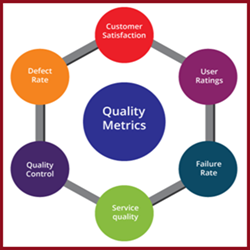How to write a superb FAT or SAT Document.
How to write a superb FAT or SAT Initiation and Execution.
 FAT or SAT 3819
FAT or SAT 3819Understanding how to write a superb FAT or SAT is almost instinctive because the FAT or Factory Acceptance Testing is executed at the vendors test facility and the latter, the SAT or Site Acceptance Testing is executed at the clients site. The FAT document must be written to fully challenge the Functional Specification (FS) that was derived originally from the User Requirements Specification (URS). Regulatory compliance protocol documentation standards must be used for writing the FAT. The intimate and detailed knowledge required to write the FAT; dictates that the vendor should write it. The SAT is a slightly less onerous document but still challenges all aspects of the equipment under qualification.
It is actually criminal that having spent hundreds of hours authoring, developing and finally executing a detailed FAT at the factory, the document is often allowed to die and never be used again. For instance in a project Validation Online was closely involved in; 87 people spent nearly one year in raising, approving and executing the FAT for a Distributive Control System, while on site, 30 people spent over a year writing the qualification test scripts. The FAT reviewed and condensed would have done a much better job, partly because it was written by staff, who had direct access to the design staff who designed the DCS, but mainly because it was ready, and should have been freely available from the vendor. The FAT or SAT along with the FT, are the same as the re-qualifying tests that are carried out on laboratory and process equipment. It becomes a little obvious that if these documents were written to normal validation protocol standards, then, the one document could be used for the testing section in documents like, the FAT, FT, qualification and re-qualification of equipment.
FAT and SAT Defined.
Factory Acceptance Tests (FAT)
The SAT is related to the FAT and also entails inspection and dynamic testing of systems or major system components to support the qualification of equipment. This is written by the client and verifies that the installed functionality of the equipment meets or exceeds the operational requirements as specified in the equipment URS. The SAT is executed on completion of all commissioning tasks; but prior to the start of Installation Qualification execution.
FAT and cGMP.
 FAT or SAT 2879
FAT or SAT 2879Detailed methods of how to write a superb FAT or SAT, are given in cGMP rules and guidelines issued by pharmaceutical, biotech and medical device industries regulators. Acceptance test documentation are routinely used to ensure that all cGMP requirements are complied with. Requirements are legislated for (mainly through) CFR Parts 11/210/211/820 in the USA and in similar legislation through other countries of the world. Briefly, it requires all manufacturing of controlled medical products to be compliant with legislation that will give a high degree of confidence that they are fit for their intended use, comply with the requirements of the Marketing Authorization and do not place patients at risk due to inadequate safety, quality or efficacy. The attainment of this quality objective is the responsibility of senior management and requires the participation and commitment by staff in many different departments and at all levels within the company, by the company’s suppliers and by the distributors. To achieve the quality objective reliably there must be a comprehensively designed and correctly implemented system of Quality Assurance Incorporating Good Manufacturing Practice, and thus Quality Control and Quality Risk Management.
It should be fully documented and its effectiveness monitored.>All parts of the Quality Assurance systems should be adequately resourced with competent personnel, and suitable and sufficient premises, equipment and facilities. There are additional legal responsibilities for the manager of the manufacturing authorisation and for the authorised person(s). The basic concepts of Quality Assurance, Good Manufacturing Practice, Quality Control and Quality Risk Management are inter-related. They are described here in order to emphasise their relationships and their fundamental importance to the production and control of medicinal products.
News for Today
12000068 FAT SAT SOP
Special Price $9.99
This combination document gives you basically 2 for 1 value. The Factory Acceptance Testing (FAT) and the Site Acceptance Testing (SAT) are very closely related. In the 'FAT' instance (which should be executed in the suppliers establishment), all aspects of design will be verified for compliance with the cGMP functionality specified in the URS. Completion and approval of the FAT, should allow shipment to point of use to be made. The SAT, must replicate the FAT plus all the additional test and inspections that are required to verify that all the 'installation specifications' as documented in the URS, have been fully satisfied. It is essential that the FAT is used to verify that all aspects of the equipment specified in the URS are working as specified, before the equipment is verified as ready for commissioning and then validation.
Equipment Combo
IQ OQ PQ Protocol. $158.00
This combination protocol has been produced in response to several hundred reader suggestions we received in our ‘Suggestions Section’. It has been carefully designed to make it the preferred choice for Process and Laboratory stand alone equipment and associated standard operating procedures. The associated Validation Master Plan is interactive, easy to use and suitable for all mixes of equipment with and without software.
The IQ section establishes documented verification that all validation Online executables are catered for and that key aspects of the equipment adhere to approved design intentions and the recommendations of the manufacturer have been suitably considered. The OQ section establishes that there is documented verification that the installed system functions as specified and that there is sufficient documented process validation executables to demonstrate this. The PQ section develops documented evidence that all the requirements specified in your corporate validation 4U manual have been verified as operating consistently and exactly as specified in the URS.
